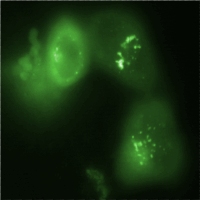Team:Heidelberg/Project SaO
From 2009.igem.org
(→Outlook and summary) |
|||
| Line 8: | Line 8: | ||
=='''Outlook and summary'''== | =='''Outlook and summary'''== | ||
The emergence of interest in manipulatable eukaryotic systems has posed much pressure on the development of methods to help understand and characterize eukaryotic gene regulation. Those methods go beyond the already rather sophisticated methodology still being established in prokaryotes to investigate and thereafter engineer these cells as needed [[Team:Heidelberg/Project_SaO#References|[1]]]. For one thing, the design of promoters exclusively responsive to one transcription factor (TF) within eukaryotic cells could certainly help improve our understanding of the key components of one pathway or the other, while eliminating the cross-talk often observed with many naturally occurring promoters. Such promoters have often posed a challenge to researchers studying signal transduction in eukaryotic systems because of the different types of TFs a single regulatory element can bind, and a single TF having multiple target regulatory regions [[Team:Heidelberg/Project_SaO#References|[2]]]. With the emergence of systematized research and attempts for modeling biological systems, the availability of data with minimal experimental variability and highly accurate experimental conditions has also contributed to the need for such finely-tuned promoters. Once such exclusive promoters could be available and methods for their characterization established, it is not so hard to imagine the revolutionary effect they could have on eukaryotic research. Some of many applications could be: | The emergence of interest in manipulatable eukaryotic systems has posed much pressure on the development of methods to help understand and characterize eukaryotic gene regulation. Those methods go beyond the already rather sophisticated methodology still being established in prokaryotes to investigate and thereafter engineer these cells as needed [[Team:Heidelberg/Project_SaO#References|[1]]]. For one thing, the design of promoters exclusively responsive to one transcription factor (TF) within eukaryotic cells could certainly help improve our understanding of the key components of one pathway or the other, while eliminating the cross-talk often observed with many naturally occurring promoters. Such promoters have often posed a challenge to researchers studying signal transduction in eukaryotic systems because of the different types of TFs a single regulatory element can bind, and a single TF having multiple target regulatory regions [[Team:Heidelberg/Project_SaO#References|[2]]]. With the emergence of systematized research and attempts for modeling biological systems, the availability of data with minimal experimental variability and highly accurate experimental conditions has also contributed to the need for such finely-tuned promoters. Once such exclusive promoters could be available and methods for their characterization established, it is not so hard to imagine the revolutionary effect they could have on eukaryotic research. Some of many applications could be: | ||
| - | :[[Image:HD09_GFPmchr_PM.jpg| | + | :[[Image:HD09_GFPmchr_PM.jpg|frameless|left|350px|Figure 1: GFP and mcherry localizing to the plasma membrane might serve as output in an assay cell line]] |
:*Understanding disease within a network context. | :*Understanding disease within a network context. | ||
Revision as of 17:58, 20 October 2009
Outlook and summaryThe emergence of interest in manipulatable eukaryotic systems has posed much pressure on the development of methods to help understand and characterize eukaryotic gene regulation. Those methods go beyond the already rather sophisticated methodology still being established in prokaryotes to investigate and thereafter engineer these cells as needed [1]. For one thing, the design of promoters exclusively responsive to one transcription factor (TF) within eukaryotic cells could certainly help improve our understanding of the key components of one pathway or the other, while eliminating the cross-talk often observed with many naturally occurring promoters. Such promoters have often posed a challenge to researchers studying signal transduction in eukaryotic systems because of the different types of TFs a single regulatory element can bind, and a single TF having multiple target regulatory regions [2]. With the emergence of systematized research and attempts for modeling biological systems, the availability of data with minimal experimental variability and highly accurate experimental conditions has also contributed to the need for such finely-tuned promoters. Once such exclusive promoters could be available and methods for their characterization established, it is not so hard to imagine the revolutionary effect they could have on eukaryotic research. Some of many applications could be:
References[1] Venter M., Synthetic promoters: genetic control through cis engineering, Trends in Plant Science, 12:118-124 [2] Carey M., Smale S. T., Hughes H., Transcriptional Regulation in Eukaryotes: Concepts, Strategies and Techniques. New York:CSHL, p. 18-25 (2000) |
 "
"

